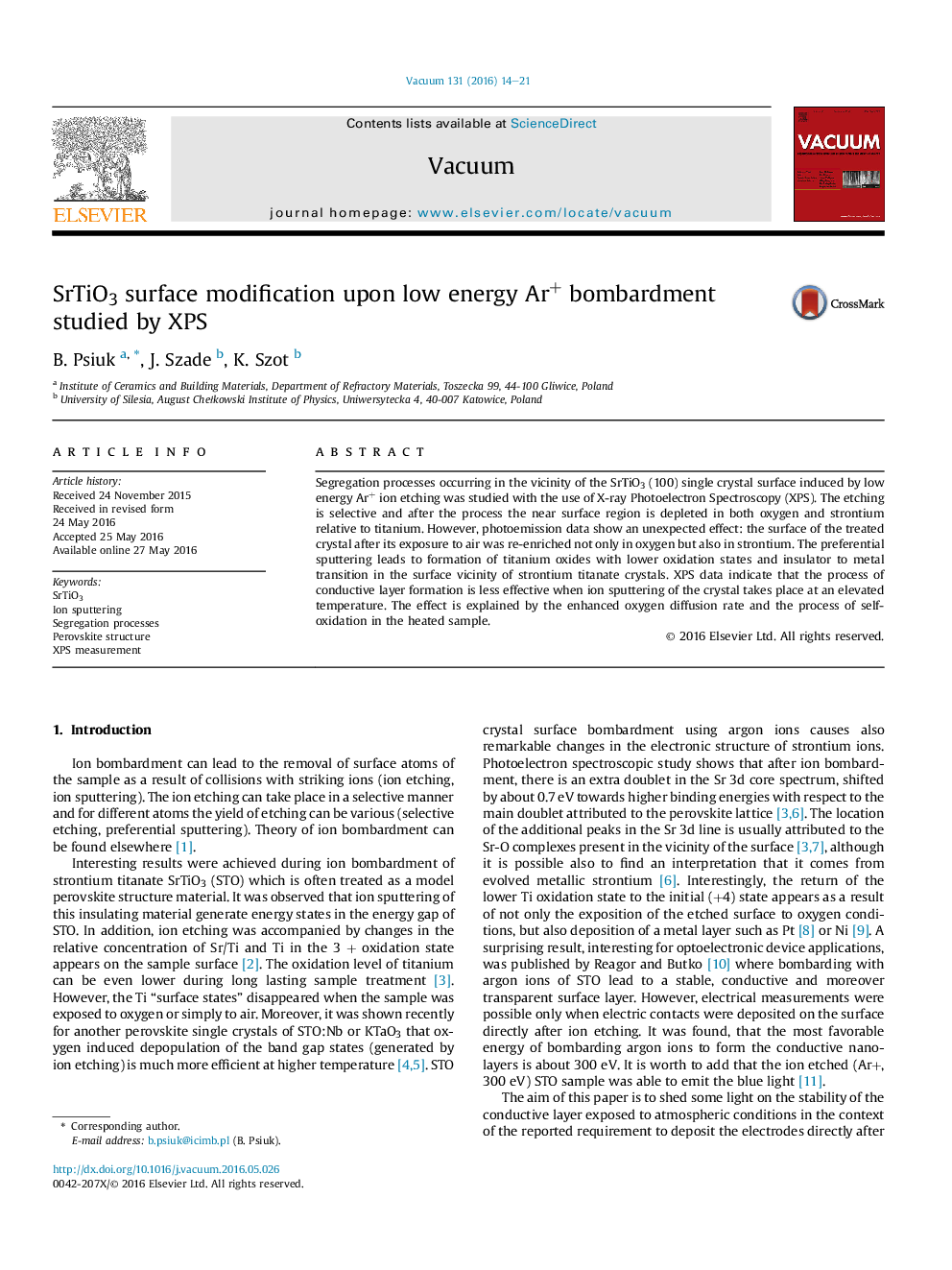| Article ID | Journal | Published Year | Pages | File Type |
|---|---|---|---|---|
| 1689649 | Vacuum | 2016 | 8 Pages |
•Low energy Ar+ ion etching caused segregation processes in SrTiO3 and formation of conductive surface layers.•Relative chemical composition Sr/Ti decreasement caused by the ion bombardment was observed.•Re-enrichment of Sr relative to Ti in the etched surface after its contact with air was occurred.•The process of conductive layer formation is less effective at elevated temperature.•Intrinsic process of oxidation in the etched and heated sample was occurred.
Segregation processes occurring in the vicinity of the SrTiO3 (100) single crystal surface induced by low energy Ar+ ion etching was studied with the use of X-ray Photoelectron Spectroscopy (XPS). The etching is selective and after the process the near surface region is depleted in both oxygen and strontium relative to titanium. However, photoemission data show an unexpected effect: the surface of the treated crystal after its exposure to air was re-enriched not only in oxygen but also in strontium. The preferential sputtering leads to formation of titanium oxides with lower oxidation states and insulator to metal transition in the surface vicinity of strontium titanate crystals. XPS data indicate that the process of conductive layer formation is less effective when ion sputtering of the crystal takes place at an elevated temperature. The effect is explained by the enhanced oxygen diffusion rate and the process of self-oxidation in the heated sample.
